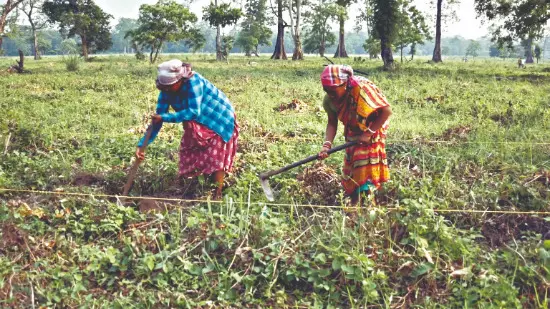Jaldapara National Park creates ‘1.05L man-days in just 8 months’

Alipurduar: The Jaldapara National Park has emerged as a model for linking wildlife conservation with rural livelihood. In just eight months, the park has generated an impressive 1.05 lakh man-days of work, benefiting thousands of villagers from the adjoining blocks of Kalchini, Falakata, Madarihat-Birpara and Alipurduar-I.
The initiative stems from the park authority’s drive to cultivate grass on 300 hectares of land to ensure a steady food supply for herbivores. Remarkably, 70 per cent of this large-scale work was undertaken by women, creating a significant avenue for female employment in the region.
Nabi Kant Jha, ADFO of Jaldapara National Park, said: “To provide adequate fodder for the herbivores, we cultivated grass across 300 hectares by engaging women laborers from nearby blocks.
This effort alone created 1.05 lakh man-days of work, with women contributing to 70 per cent of the task.” The impact of the project has been deeply felt among the beneficiaries. Jyotsna Barman, a resident of Jaldapara Forest Village, shared: “We worked for nearly six months under this initiative. Because of this employment from the Forest department, our families are living more comfortably. If the park and its wildlife thrive, we too will thrive.” To sustain the initiative, the park has also set up 14 nurseries across 20 hectares, cultivating 12 indigenous grass varieties including Chepti, Dhadda, Purundi, Madhua, Malsa and maize-like grasses. These nurseries will serve as the foundation for expanding grass cultivation to 300 hectares.
Spread over 216 sq km, Jaldapara is world-renowned for its population of around 350 one-horned rhinos. Alongside, it shelters elephants, bison, deer and other herbivores, making grassland conservation a long-standing priority of the Forest department.
Environmentalists have praised the initiative, calling it a win-win model where ecological conservation and community livelihood go hand-in-hand.



